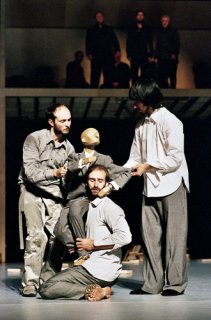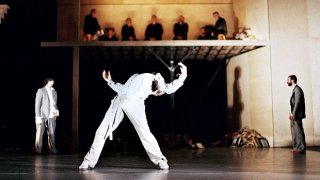Dries Van Noten shot to fame in 1986 as part of the famous antwerp six and has ruled the runway roost ever since. the Belgian star designer, who is in town today for a private dinner hosted by Vibha and Rajat Kejriwal, responds to queries from
t2 over email
India is a big part of your design sensibility. What is your first impression of India and how has it changed over the last few decades?
Since my first collection, I’ve used elements from all over the world, India included. I’m really fascinated by other cultures, other dress codes and some of my collections had been inspired by culture yet still remain the fruit of my imagination, an interpretation. What has been beautiful for me in my relationship with the Indian craftspeople who assist me in producing my collections over the years is that, with time, there has been a great evolution in the expression of what we produce. There is no pressure nor necessity that what we collaborate on seems “Indian”… It can, should we wish it to, yet it also and increasingly is more widely referenced.
Indian designers idolise you. What do you want to say to them?
Thank you for your support and belief and keep up your good and important work! There is a place for your creative voice in the world.
Antwerp, Hong Kong, Tokyo, Paris, Singapore, Dubai… When will Dries Van Noten come to India?
There are no immediate plans for a Dries Van Noten shop yet. Everything in its own time!
 Men’s collection:
Men’s collection: Autumn-Winter 2004-05
What were your first feelings after being awarded International Designer of the Year 2008 by the Council of Fashion Designers of America?
Though I felt very honoured there was also something mildly intimidating in the responsibility it brought along!
Your accessories have reached the most coveted list but do you believe in the ‘it’ phenomenon?
“It” can be just that... IT! Yet, we prefer “Also” to “IT”, we prefer that accessories remain just that… accessories.
How would you describe a Dries Van Noten woman or man?
My creations are not addressed to one type of men or women. I propose many possibilities of wearing garments but never wish to impose. I let the wearer create their own expression in mixing my garments with those of their wardrobe or other labels. Authenticity and the individuality of a personal style is paramount.
 Women’s collection:
Women’s collection: Autumn-Winter 2003-04
You are known never to advertise. When and what prompted you to make that decision and stick with it?
It was a decision born more from budgetary necessity than strategy at the time. And it remains so today.
How important is it in the West to have celebrities wearing your creations? Does it give them an edge, considering you are known as one of the most cerebral designers?
It can be important from a marketing point of view, yet we are more interested in touching other creative people with our work for the creative exchange that it fosters than simply due to their fame as “celebrities”.
Your Paris shows are always spectacular. Why and how did this trend begin? Is it okay that the drama contradicts your design rather than complement it?
Fashion shows are the way to express myself. For me, fashion shows are far more than just models and clothes. I see them as a theatre where many elements are mixed together to create a unique atmosphere and define a specific message. From the very beginning we have always tried to do something different. We attempt to convey emotion, not just in the clothing but also at a visual level. Fashion shows will always remain the privileged method for me to express what I have worked on for each collection. I find great pleasure in their conception and putting them into practice. At the end of it all, there is something to be said for witnessing the moment when all the effort put into them comes off as well as you hoped.
And, lastly, what do you love most about India?
The beauty and serenity of its people and the vastness and intimacy of its land!

 Thank you so much for sharing :flowers:
Thank you so much for sharing :flowers:

 ...
...






 Thanks for the scans!
Thanks for the scans!


 Loved reading that interview
Loved reading that interview 
 still has a baby face and head full of curly hair
still has a baby face and head full of curly hair 















